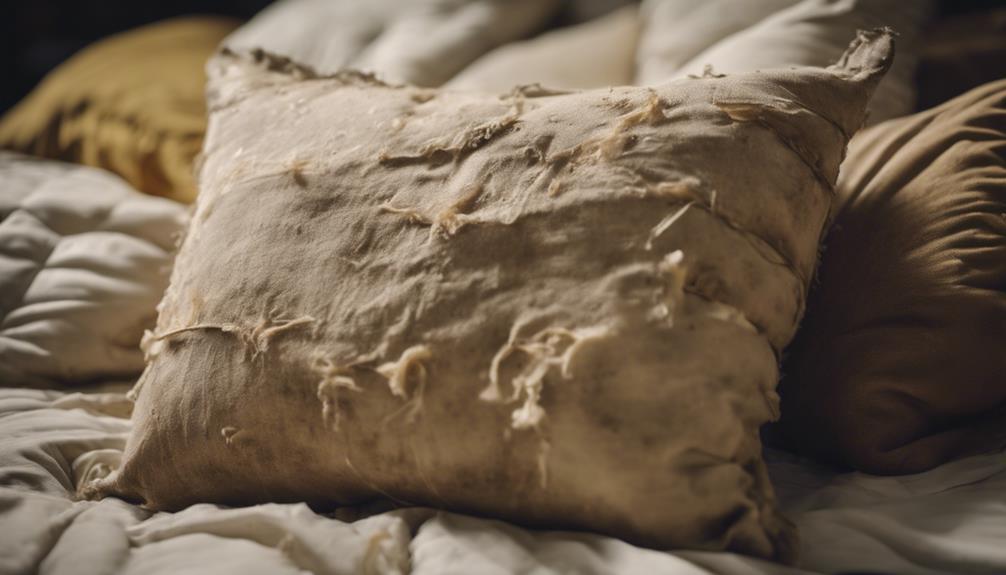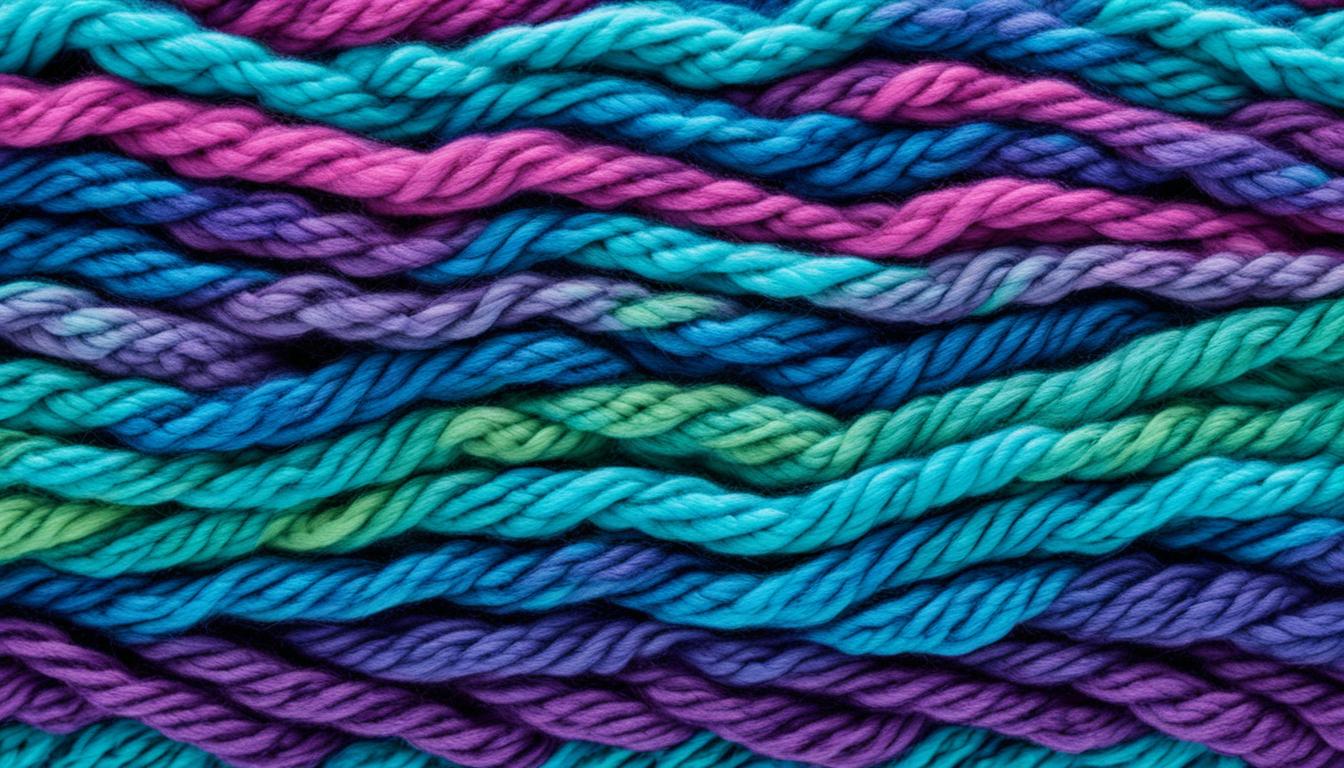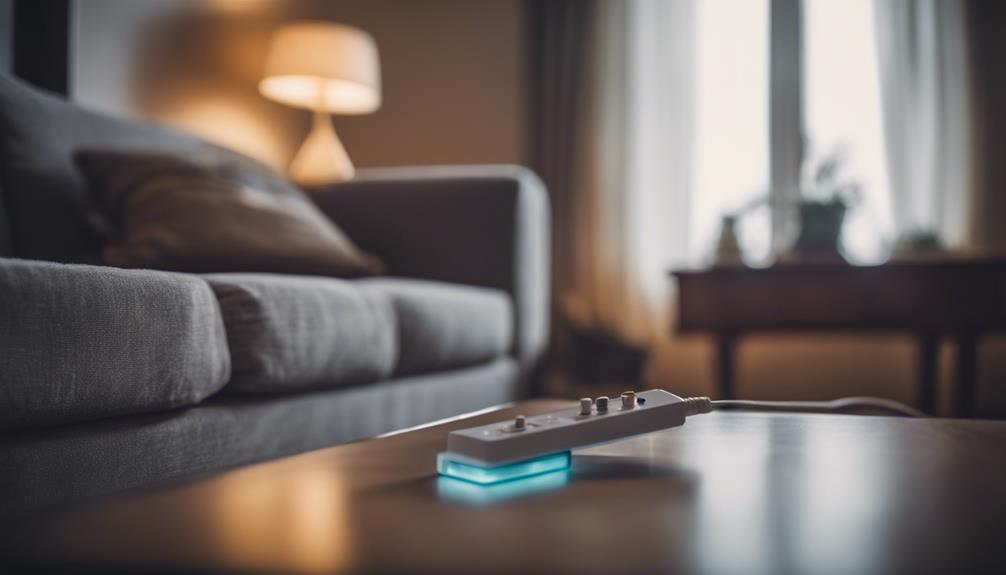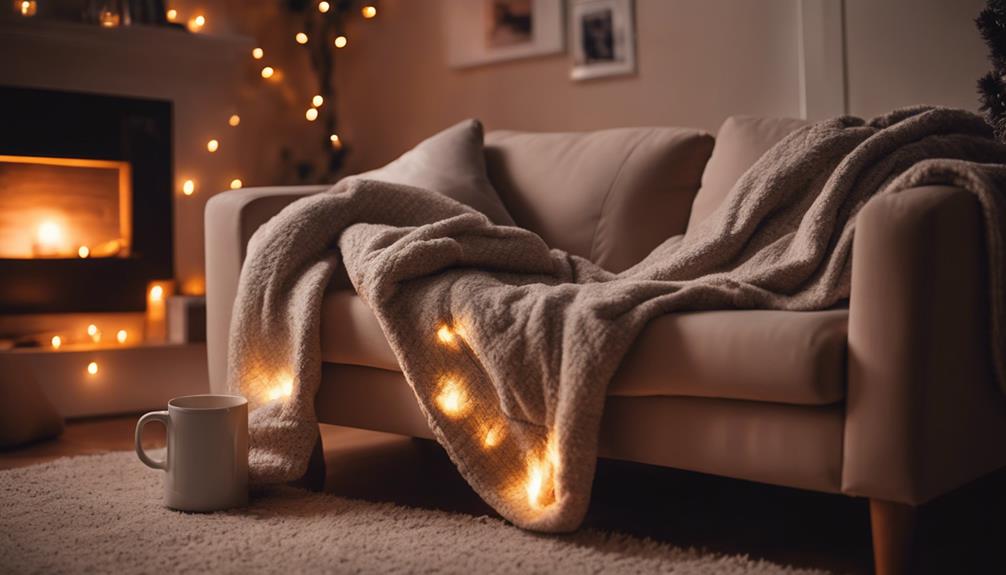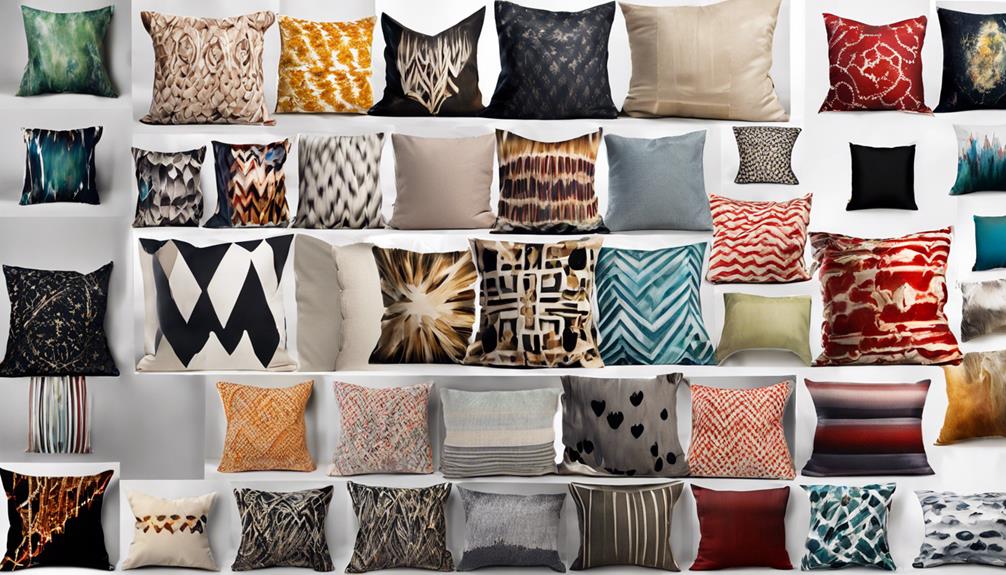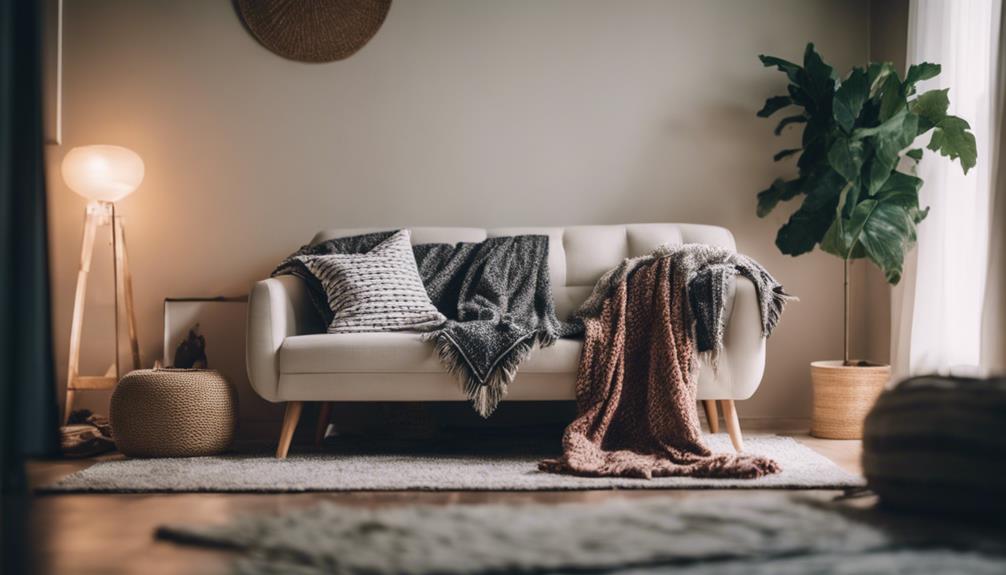When it's time to throw pillows away depends on factors like pillow type and care. Typically, pillows last 1-2 years, with high-quality ones lasting longer. Signs of deterioration include shape loss, stains, or odors. Pillow shape changes indicate replacement need and impact sleep quality. Dirty pillows can harbor allergens, sweat, and even mold, impacting health. New pillows improve sleep, support, and hygiene. Recycling or upcycling old pillows is eco-friendly. Sustainable options include textile recycling and composting. Continuing to explore pillow care guarantees better sleep and overall well-being.
Key Takeaways
- Pillows should be thrown away when they lose shape and support.
- Stains, tears, and odors indicate it's time to replace pillows.
- Clumps, lumps, or flattened areas show pillow wear and tear.
- Changes in shape like lumpiness or flattening signal replacement.
- Shifting filling material inside affects pillow performance, necessitating replacement.
Pillow Replacement Frequency
When it comes to maintaining comfort and support for a good night's sleep, replacing pillows every 1-2 years is crucial. Synthetic pillows, in particular, typically last around 1-2 years before needing to be replaced.
While higher-quality pillows can endure for 18 to 36 months with proper care, most pillows fall within the range of needing replacement every 1-2 years.
Regularly switching out pillows not only guarantees better hygiene but also enhances sleep quality by providing adequate support.
Signs of Pillow Deterioration
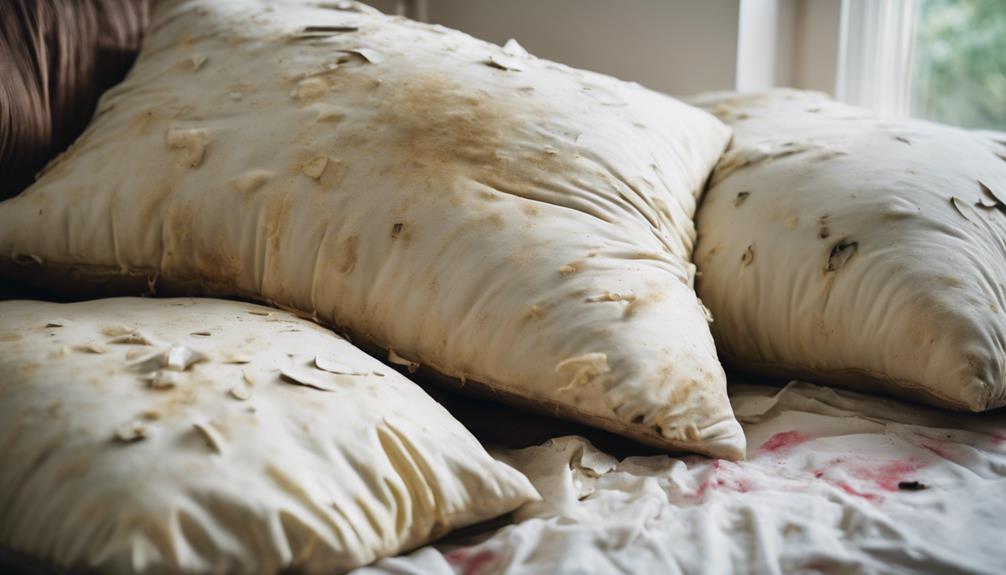
As pillows age, they can lose their shape, support, and firmness, affecting comfort and sleep quality.
Stains, tears, and unpleasant odors serve as clear indicators that it's time to replace old pillows.
Keep an eye out for clumps, lumps, or flattened areas, as these are signs of wear and tear that impact pillow performance.
Pillow Shape Changes
Pillow deterioration becomes evident when changes in its shape, like lumpiness or flattening, occur. These visible signs of wear, such as loss of firmness, indicate that it may be time to replace your pillow.
When your pillow no longer provides the support it once did and feels uneven due to the shifting of filling material inside, it has likely deteriorated. A pillow that fails to maintain its original shape and structure can lead to discomfort and poor sleep quality.
If you notice these pillow shape changes, it's advisable to contemplate getting a new one for proper support and comfort for a good night's rest.
Allergies and Irritation
Regular cleaning and replacing of pillows can greatly reduce allergy triggers caused by dust mites, debris, and allergens that accumulate in deteriorating pillows.
Dust mites, commonly found in old pillows, can exacerbate allergies and respiratory problems. As pillows deteriorate, they collect dust, debris, skin cells, and hair, creating an ideal environment for dust mites to thrive and worsen allergies.
The buildup of dust and particles in aging pillows can lead to increased allergy symptoms and irritation. To mitigate these issues, it's essential to regularly clean and replace pillows to prevent the accumulation of allergens.
Impact of Dirty Pillows on Health
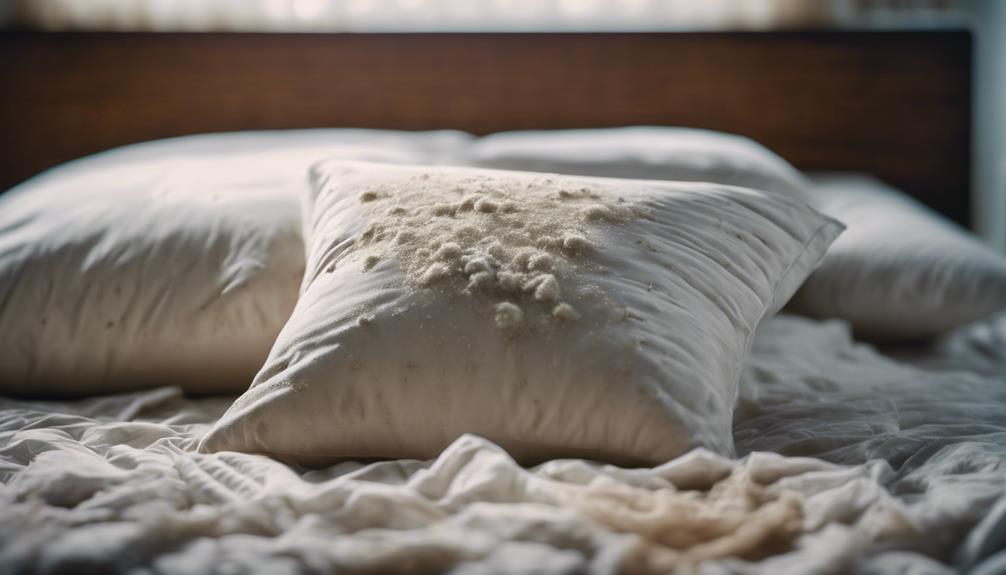
Dirty pillows can pose health risks by harboring allergens like dust mites, leading to respiratory issues and allergies, while accumulated body oils and sweat can cause skin irritation and acne.
Mold and mildew growth on unwashed pillows can trigger asthma and respiratory problems, and bacteria thriving on dirty bedding can contribute to infections and worsen existing health conditions.
Regularly washing and replacing pillows can help prevent these negative health impacts, ensuring a healthier sleep environment.
Health Risks of Dirty Pillows
With the accumulation of dust mites, allergens, and bacteria, our health can be greatly affected by the neglect of proper pillow hygiene. Sleeping on dirty pillows can expose us to these harmful elements, leading to respiratory issues such as coughing, sneezing, and congestion.
The presence of allergens in dirty pillows can trigger allergies, making symptoms worse for individuals sensitive to dust mites and other particles. These allergens can exacerbate conditions like asthma, making it important to maintain clean pillows to reduce the risk of respiratory problems.
Regularly washing or replacing dirty pillows is essential to safeguard our health and prevent these potential health risks. Taking simple steps to ensure pillow cleanliness can significantly improve our overall well-being.
Allergies From Unclean Pillows
Indoor allergens lurking in unclean pillows can exacerbate respiratory issues and trigger allergies, impacting our health greatly. To understand the impact of dirty pillows on our well-being, consider the following:
- Dust Mites: Unclean pillows provide a breeding ground for dust mites, which are a common allergen that can worsen respiratory problems.
- Allergies: Accumulated dust and particles on dirty pillows can intensify allergy symptoms, leading to discomfort and health issues.
- Respiratory Issues: Shed skin cells and hair on pillows attract dust mites, further exacerbating respiratory conditions and allergies.
- Prevention: Regular cleaning of pillows is essential to reduce allergens, improve indoor air quality, and minimize allergy triggers for better overall health.
Bacteria Breeding on Pillows
Regularly unwashed pillows can serve as breeding grounds for bacteria, fungi, and dust mites, potentially causing skin infections and respiratory issues. Over time, pillow covers accumulate sweat, oil, dead skin cells, and allergens, creating an unhealthy sleep environment.
The presence of germs on pillows can worsen allergies, asthma, and respiratory conditions. Neglecting to clean or replace pillows regularly can aid in the spread of harmful microorganisms, impacting overall well-being.
Ensuring proper pillow hygiene is essential to prevent the proliferation of bacteria and maintain a healthy sleeping space. Remember, investing in clean pillow covers, washing pillowcases frequently, and replacing pillows when needed can greatly reduce the risk of bacteria breeding and exposure to allergens.
Prioritize your health by keeping your pillows clean and fresh.
Pillow Material Lifespan
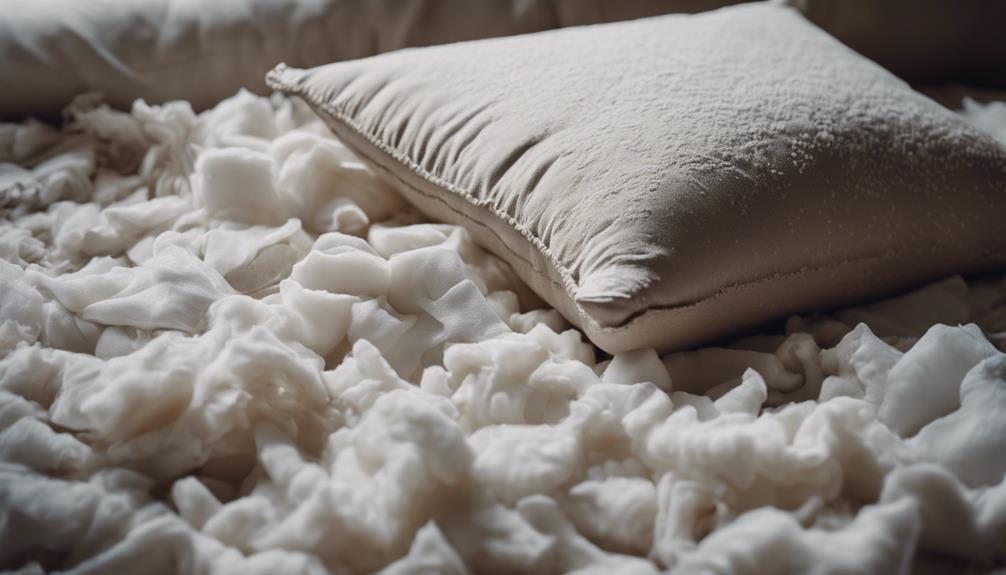
Considering the lifespan of pillow materials can greatly impact how long your pillows provide ideal comfort and support. When evaluating how long your pillows will last, it's crucial to understand the different materials they're made of:
- Down and Feather Pillows: These can last 5-10 years or more if washed regularly every 6 months.
- Synthetic Pillows: Typically last 1-2 years depending on material quality and frequency of use. Signs of wear include clumping or flatness over time.
- Foam Pillows: Longevity varies based on foam quality and usage. Foam pillows may become harder with time.
- Care and Maintenance: Regular washing and proper care can extend the lifespan of down and feather pillows, helping to maintain their comfort and support levels over time.
Understanding the lifespan of different pillow materials can guide you in making informed decisions about when it might be time to replace your pillows for better sleep quality.
Pillow Smell Test
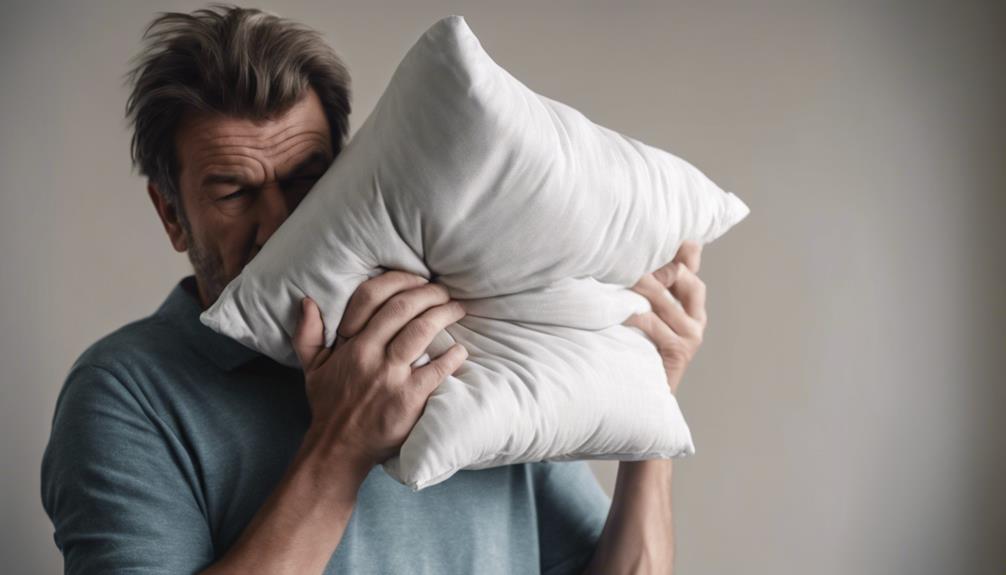
When evaluating the lifespan of different pillow materials, one vital aspect to consider is conducting a pillow smell test to check for musty odors or lingering body odor. Unpleasant smells on pillows can indicate a buildup of bacteria, oils, and allergens, impacting both hygiene and comfort.
Regularly washing pillows is essential to eliminate odors and maintain freshness. Lingering smells that persist even after washing may be a sign that it's time to replace the pillow. A pillow that smells fresh contributes to a clean and comfortable sleeping environment, promoting better rest and overall well-being.
Pillow Allergen Concerns
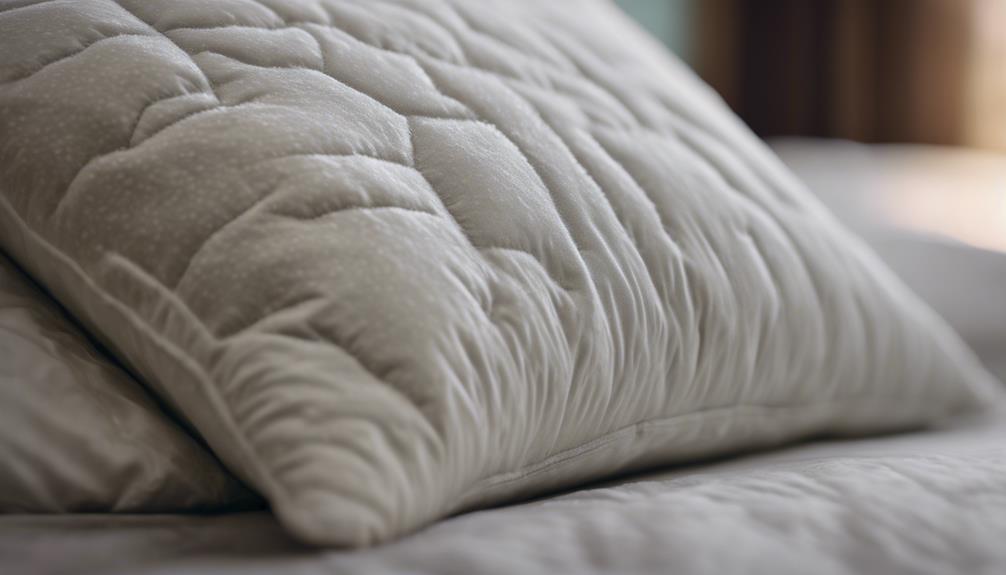
Concerns regarding pillow allergens arise from the accumulation of dust, allergens, and particles that can exacerbate allergies. Here are some key points to keep in mind:
- Dust Mites: Old pillows can harbor dust mites, microscopic creatures that thrive in warm, humid environments. These pests feed on shed skin cells and can trigger allergic reactions in sensitive individuals.
- Allergies: The buildup of dust, pet dander, and pollen in pillows can worsen allergy symptoms, causing sneezing, coughing, and congestion. It's important to address these allergens to maintain a healthy living environment.
- Indoor Air Quality: Neglecting pillow hygiene can impact indoor air quality. As pillows collect dust and allergens, these particles can circulate in the air, leading to respiratory issues and discomfort.
- Preventive Measures: Regularly cleaning or replacing pillows can help reduce allergen exposure, alleviate allergy symptoms, and enhance indoor air quality. Maintaining clean bedding is essential for a restful and healthy sleep environment.
Benefits of New Pillows
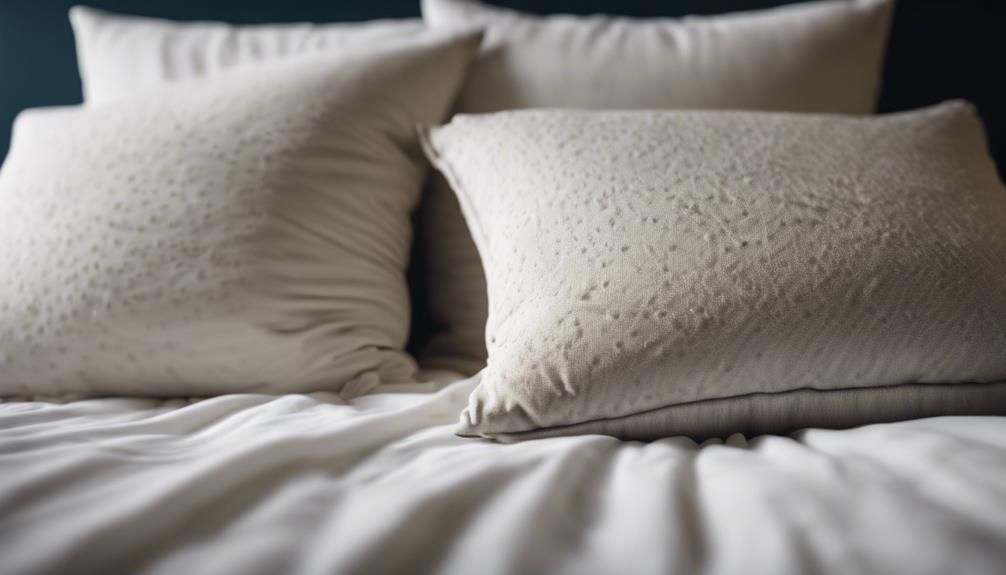
Exploring the benefits of new pillows reveals the significant impact on sleep quality and hygiene, addressing concerns related to allergens and dust accumulation in older pillows. New pillows offer better neck support, promoting proper alignment and reducing strain on muscles for a more restorative sleep experience.
Improved hygiene is another key advantage of replacing pillows regularly, as old pillows can harbor dust mites, bacteria, and allergens that affect respiratory health. By investing in fresh, comfortable pillows, you can enhance your overall sleep quality and wake up feeling more rejuvenated.
When selecting new pillows, factors like filling, fabric, weight, size, and quality play an essential role in determining the level of comfort and support they provide. Whether you prefer memory foam, down, or a hybrid option, exploring different types can help you find the perfect match for your sleep style.
Consider exploring Casper's selection of pillows for a range of options tailored to your preferences.
Pillow Recycling Options
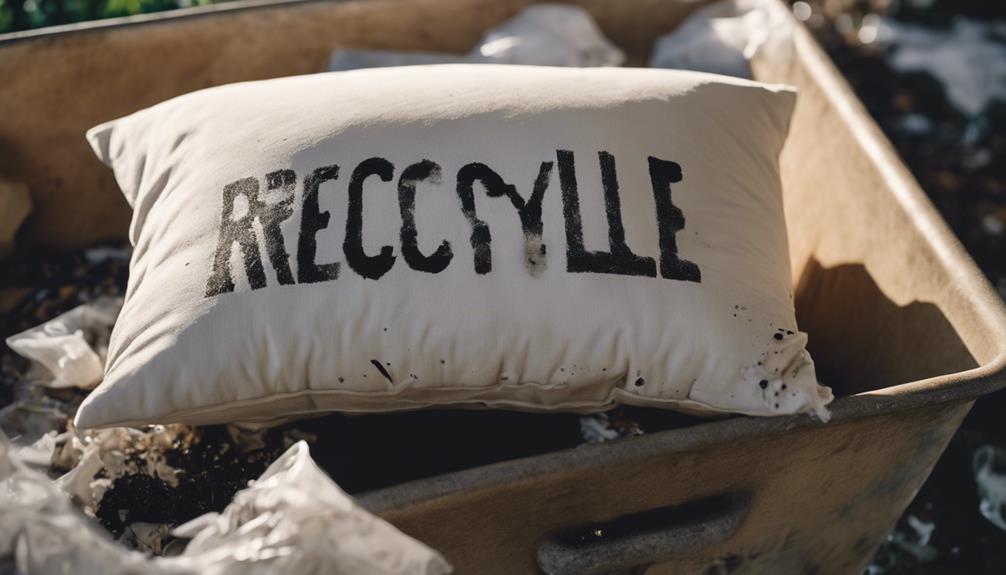
Considering the environmental impact of old pillows, exploring pillow recycling options becomes essential for promoting sustainability and reducing waste. Here are some ways to responsibly recycle old pillows:
- American Textile Recycling: Utilize specialized services like American Textile Recycling Service, which focuses on recycling old pillows effectively.
- Local Recycling Facilities: Some local textile factories and mail-in programs accept old pillows for recycling, providing convenient drop-off points or collection services.
- Composting: Depending on the materials used, such as feather or down stuffing, old pillows can be composted to decompose naturally, reducing landfill waste.
- Repurposing: Recycled pillows can be transformed into insulation material, carpet padding, or rags, extending their usefulness and minimizing environmental impact.
Creative Pillow Upcycling Ideas

Let's get creative with old pillows by exploring innovative upcycling ideas to give them a new purpose in our homes.
One way to repurpose old pillows is by creating floor cushion seats, providing extra seating for gatherings or movie nights. You can also transform these pillows into cozy pet beds, offering a comfortable spot for your furry companions to relax.
Another practical way to utilize old pillows is by turning them into door draft stoppers, helping to improve energy efficiency by keeping cold air out.
For outdoor enthusiasts, consider repurposing old pillows into gardening cushions, offering support and comfort while tending to your garden.
Additionally, old pillows can be used as packing material or insulation during a move, protecting fragile items in transit.
With a little creativity and effort, these simple ideas can breathe new life into your old pillows and serve a variety of useful purposes around your home.
Sustainable Pillow Disposal Practices
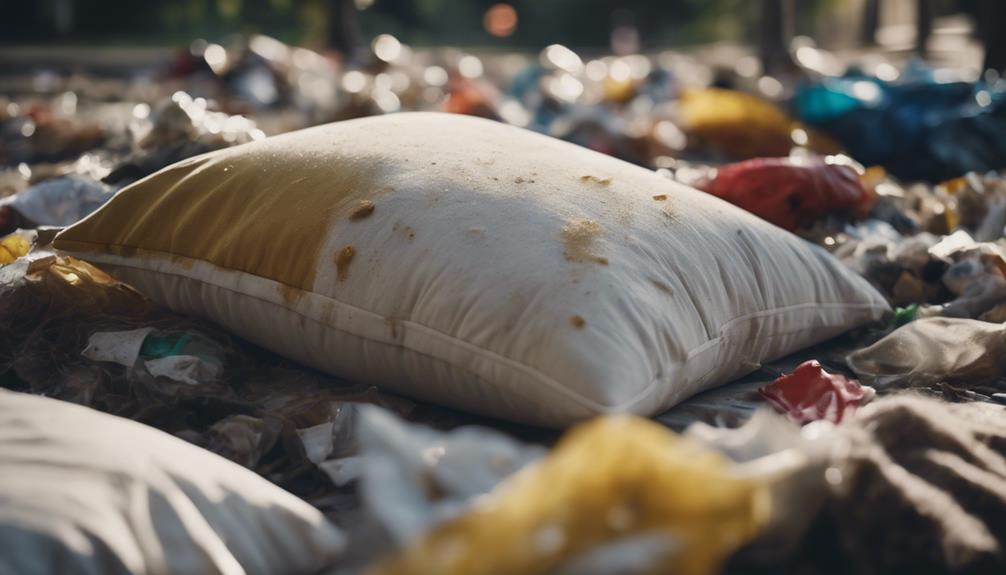
Sustainable disposal practices for old pillows involve utilizing textile recycling facilities like American Textile Recycling Service to reduce waste in landfills and support the circular economy. When considering sustainable pillow disposal, here are some key options:
- Utilize Textile Recycling Facilities: These facilities specialize in recycling textiles, including pillows, to prevent them from ending up in landfills.
- Local Textile Factories and Mail-In Programs: Some local factories and mail-in programs accept old pillows for recycling, providing convenient options for sustainable disposal.
- Composting Depending on Materials: Composting old pillows can be an option, especially if they're made from natural fibers like cotton or down feathers.
- Prioritize Recycling Over Donation: While donating pillows may not be common due to hygienic risks, recycling remains a viable and sustainable method for pillow disposal.
Frequently Asked Questions
When Should I Throw Away My Pillow?
When to throw away pillows is essential for comfort and health. Pillows should be replaced every 1-2 years for best hygiene and support.
Signs to watch for include loss of shape, lumps, stains, tears, or odors. Old pillows can harbor dust mites and allergens, affecting sleep quality.
Regularly replacing pillows prevents neck pain and discomfort while upgrading enhances overall well-being. Remember, it's time to swap out those pillows every 1-2 years!
Should I Just Throw Out Old Pillows?
Yes, old pillows should be thrown out when they lose shape, support, or comfort. If they're lumpy, stained, torn, or stinky, it's time to replace them.
When pillows don't bounce back, they need to go. It's recommended to replace pillows every 1-2 years for hygiene reasons.
You can reduce environmental impact by recycling or donating old pillows responsibly.
Why Do Pillows Turn Yellow?
Pillows turn yellow due to a variety of factors such as sweat, body oils, saliva, dust mites, dead skin cells, lack of washing, and exposure to sunlight.
Using pillowcases that trap dirt and oils can also contribute to the yellowing process. Regular washing and proper care are essential to prevent this discoloration.
It's crucial to maintain cleanliness and sun exposure to keep pillows looking fresh.
When Should You Throw Out Throw Pillows?
When it's time to toss throw pillows, it's important to take into account their shape, support, and overall condition. Regularly replacing them every 1-2 years can help maintain comfort and hygiene.
Signs like flatness, lumps, stains, tears, and odors that won't budge indicate it's time to bid farewell. Proper disposal prevents allergen buildup and promotes a cleaner living space.
Upgrading these pillows can enhance sleep quality and support ideal spinal alignment for better health.
Can washing pillows extend their lifespan and delay the need to throw them away?
Yes, washing pillows at home can indeed extend their lifespan and delay the need to throw them away. Regularly washing pillows can help remove dust, dirt, and bacteria, preserving their quality and comfort. Follow the care instructions on the label and use a gentle cycle to keep them clean and fresh.
Conclusion
To summarize, being aware of when to get rid of pillows is crucial for maintaining a healthy sleep environment. By regularly replacing pillows and identifying signs of wear and tear, we can avoid health issues and guarantee a restful night's sleep.
Take into account the lifespan of pillow materials, conduct a smell test, and explore recycling or upcycling options for sustainable disposal. Investing in new pillows can provide numerous benefits, such as enhanced comfort and hygiene. Make the switch when necessary for a revitalizing sleep experience.
